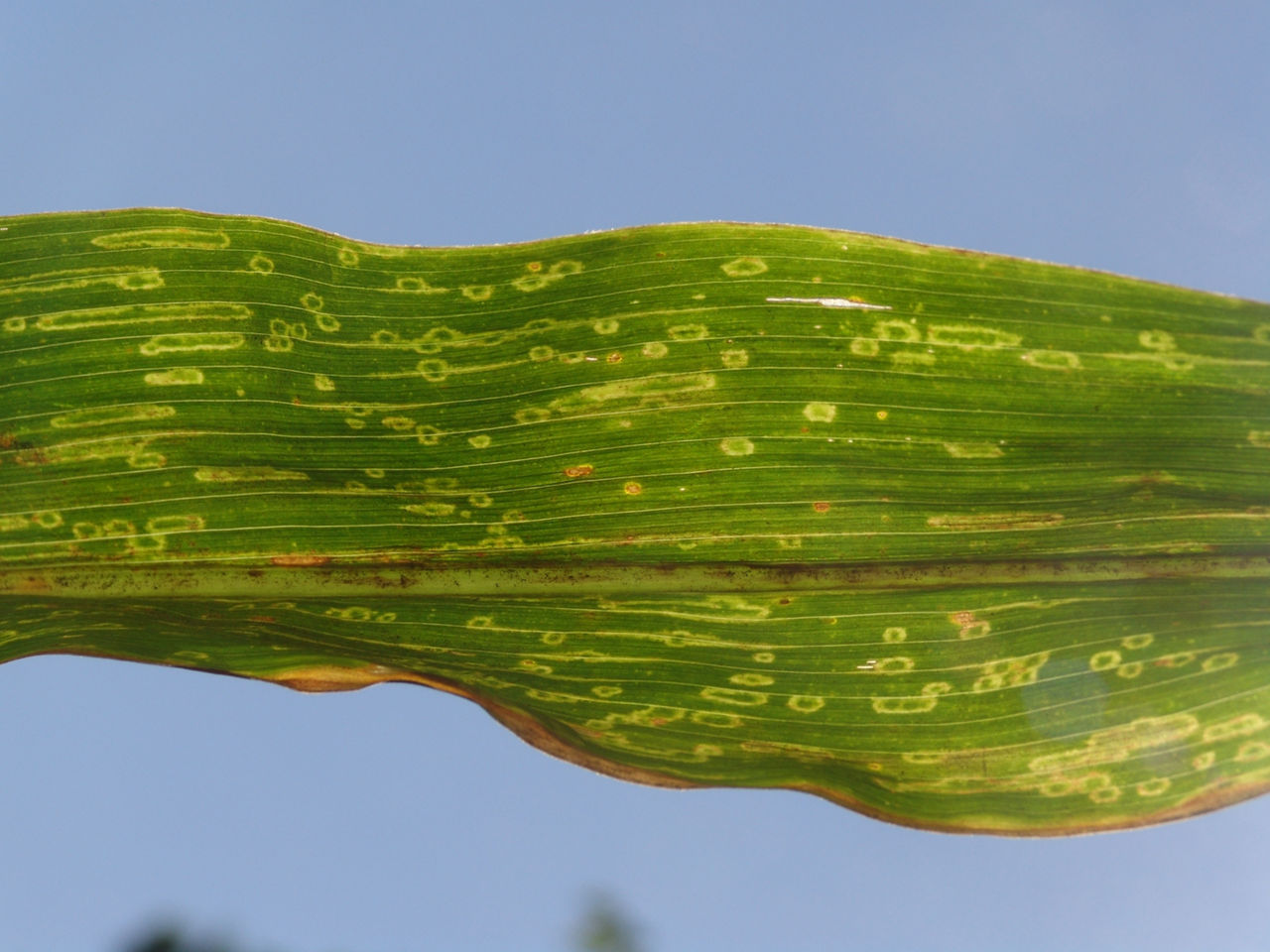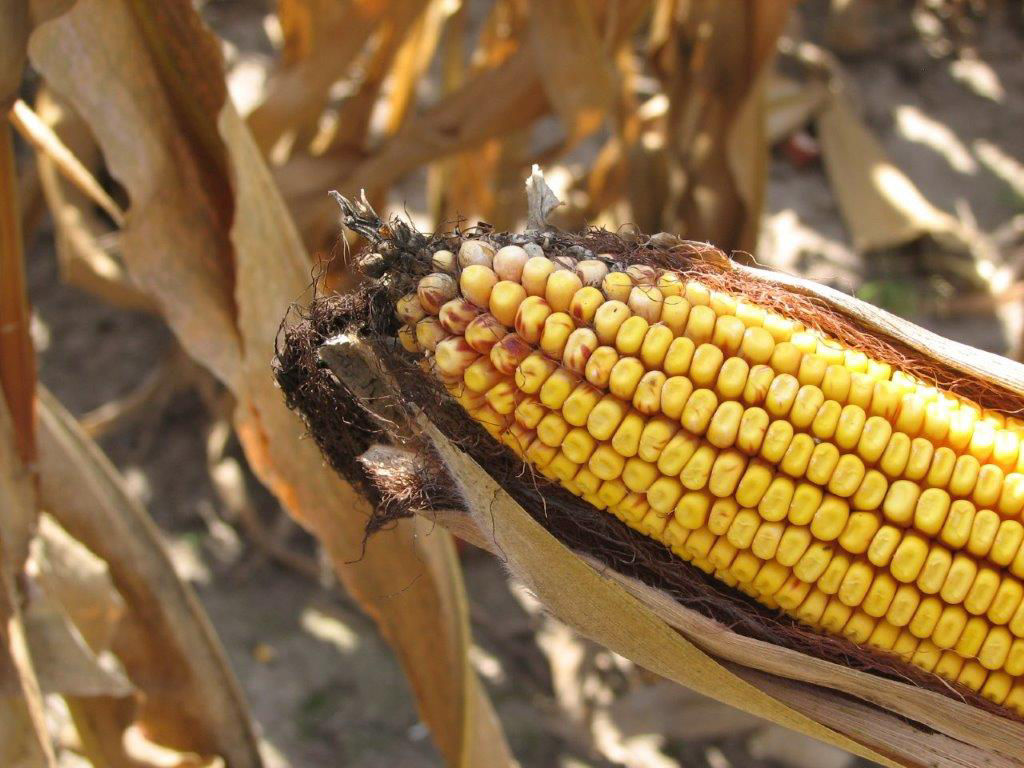Wheat Streak Mosaic Virus and Kernel Red Streak in Corn Connection
July 16, 2025
Wheat Streak Mosaic Virus (WSMV) is a viral disease vectored or spread by the wheat curl mite that can infect many annual and perennial grass plants but has the largest economic impact on winter wheat. The wheat curl mite is a microscopic mite that is about 0.3 mm in length and cannot be seen by the naked eye. The wheat curl mite feeds on infected plants and moves across a field, usually by wind. The feeding process then spreads the disease to those plants. Being very small, the mite can be moved by wind; however, the virus is not spread directly by the wind.1 The mite can also vector High Plains Virus, a disease of wheat and corn in the Great Plains, and Triticum Mosaic Virus.2
Since many species of grasses can be infected with WSMV, and vectored by a mite, there are no practical means of stopping the disease once it has become established in a crop. Cultural practices are the best means for managing the wheat curl mite and WSMV.
Fall planted winter wheat is impacted the greatest because it has a longer time for potential infection than spring seeded grass crops. The earlier the infection occurs in the fall the greater the potential for economic damage to the crop. The virus is identified by the green and chlorotic streaking along the leaf creating a mosaic appearance (Figure 1). It usually appears first along field edges and spreads across a field. Economic damage can be isolated to small areas along edges in best cases and can spread across entire fields resulting in a lack of tillers on the plants, stunted plants that do not head out and blank heads if a head does form. Fields can be a total loss in severe infections.
Evidence of the wheat curl mite feeding on immature corn kernels is described as kernel red streak (KRS).3 The kernel streaking can be seen when husks are pulled back and reddish streaks can be seen across the yellow caps of the kernels (Figure 2). The streaking can be pretty and is usually not an economic concern as there is little, if any, impact on yield potential. However, food grade millers may reject the corn because the coloration may discolor finished food products. Some corn products may show KRS more than others.3


How to manage
There are a few management considerations that will help reduce wheat streak mosaic virus in wheat.
Sanitation
This is accomplished by eliminating grasses within and adjacent to the field prior to planting. Tillage or herbicide burn down practices where the existing grass crop is completely desiccated prior to planting is the best practice. This is effective because it eliminates plants that can host the disease. Wheat curl mites must feed on infected WSMV plants to become vectors to non-infected plants. This is sometimes better in theory since a grower can only control the volunteer grass plants and grassy weeds on their own acre. Fencelines and neighboring fields can also be a source of infection. Elimination of volunteer wheat in previous fields helps prevent a “green bridge” from the volunteers to adjacent planted winter wheat.
Delay Wheat Planting
Delaying planting works by simply having the fall seeded crop exposed to the infection for a shorter period. In the northern plains we want some fall growth for ground cover for winter wheat survival and erosion control, but it is a balance with having the crop vulnerable to an infection of WSMV. It stands to reason that an early September seeding would have more potential for infection that an early October seeding date.
Variety Selection
Wheat varieties differ in their susceptibility to WSMV. Check with your seed supplier or University data since most established varieties are screened for their resistance and or tolerance to WSMV.
Jeremy Johnson
Channel Agronomist
Sources
1Byamukama, E., Langham, M., and Strunk, C. 2021. Wheat streak mosaic of wheat. South Dakota State University. https://extension.sdstate.edu/sites/default/files/2021-10/P-00223.pdf
2Michaud, J.P. 2024. Wheat curl mite. Department of Entomology. Kansas State University. https://entomology.k-state.edu/extension/crop-protection/wheat/curlmite.html
3Nielsen, R.L. 2017. Kernel red streak in corn. Corny News Network. Purdue University. https://www.agry.purdue.edu/ext/corn/news/timeless/KernelRedStreak.html
Web sites verified 5/29/25. 1110_565000